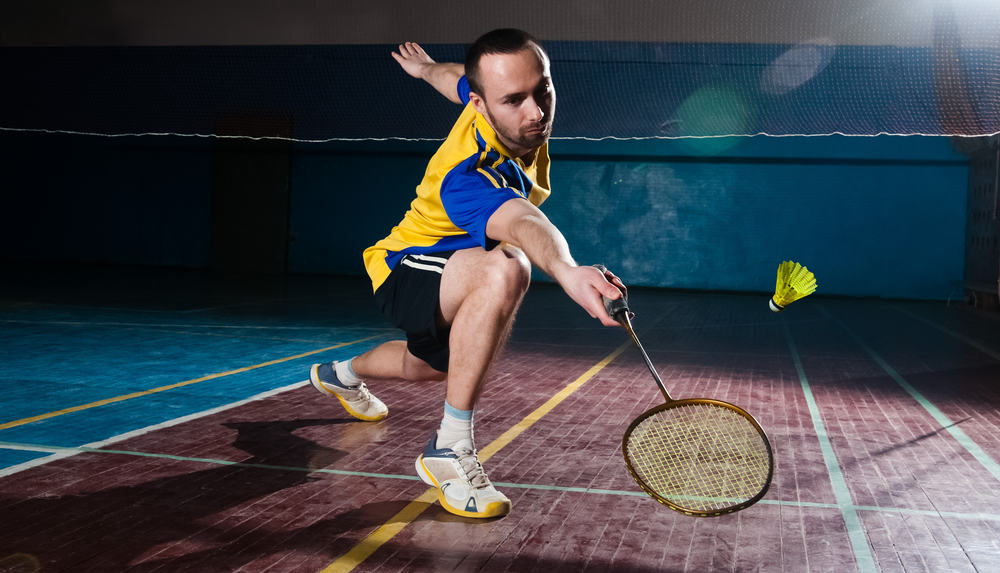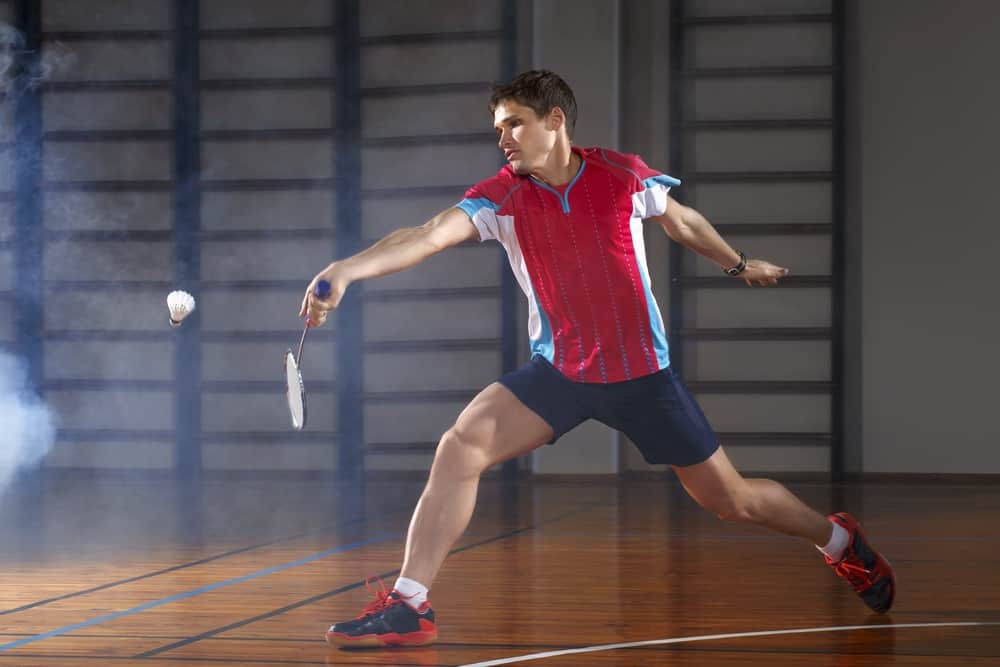Badminton is widely considered the fastest racquet sport in the world. This fact alone makes badminton a challenging sport to master. As in any other hard sport, many hours of training and commitment are required to be the best or one of the best. If you’re new to badminton, you might be wondering – Is badminton hard?
Badminton is a hard sport because of the speed with which the game moves. It’s also difficult to master because it requires great skill, high mental agility, good hand-eye coordination, and accuracy. It is also physically demanding, and the scoring system contributes to longer games.
In this article, I will explore all of the aspects that make badminton difficult and cover the top 10 things that make badminton one of the hardest racquet sports to play. Yes, even harder than tennis. Read on to learn more of these interesting facts.
The Beginner Badminton Racquet I Recommend
Why I Feel Badminton is a Challenging and Thrilling Sport
Badminton has captivated players and spectators alike for decades. But, even though I came from a tennis background, I’ve always felt Badminton poses a unique challenge.
As a former tennis player (and current lover of all things pickleball) I personally found three specific aspects of badminton the most difficult. The game’s speed, the hand-eye coordination needed and the longer games really make badminton hard.
Badminton, an electrifying racquet sport, poses a formidable challenge to players due to its blistering speed, demanding hand-eye coordination, and prolonged games. The game’s breathtaking pace requires lightning-fast reactions, keeping players on their toes as they contend with shuttlecock speeds of up to 300 miles per hour! Yes, that’s true! More on that below.
Hand-eye coordination is a crucial aspect of mastering badminton. As a player, you must execute precise shots, anticipating the unpredictable trajectory of the shuttlecock, and react like a cat. Achieving such accuracy demands rigorous training and honed reflexes. Muscle memory is huge in badminton that doesn’t happen overnight.
Additionally, badminton’s rally scoring system ensures that every point contributes to the final score, prolonging games and testing players’ endurance. Strategic thinking becomes paramount as athletes must navigate extended rallies, requiring mental fortitude and sustained physical performance.
Those are the reasons I find badminton hard. But in order to cover the topic of why badminton is hard more thoroughly, I did a little more research and came up with the Top 10 reasons why badminton is challenging; especially for beginners.

1. Badminton Requires Good Racquet Fundamentals
Before you can even think about playing a serious game of badminton, you must do more than try to hit the shuttlecock, and that in itself is not an easy task. Not being able to master these skills — especially the footwork, moving around the court, and hitting the shuttlecock accurately — will be problematic. Here are a few skills required to play badminton.
- Proper grip of the racquet
- The “Ready” Stance
- Footwork
- Unique Strokes/Shots
- Correct racquet technique for various strokes
- Serving
For more on serving, check out this helpful guide I created for beginners around the 3 rules for serving in badminton.
2. Racquet Speeds Are Incredibly Fast
The Guinness Book of Records has confirmed that badminton is the fastest racquet sport played on the earth. 306 mph (493 kph) is the fastest recorded speed of the badminton racquet.
With individuals hitting at speeds like this, what speed must the shuttlecock be traveling at as it approaches?
3. The Shuttlecock Also Moves at Record Speeds
With shuttlecocks getting hit with a racquet moving faster than a high-speed train, the shuttlecock must also be traveling at high speeds. The speed range of a shuttlecock is between 25 to 50 meters per second (55 to 111 miles per hour/90 to 180 kilometers per hour).
Shuttlecocks moving at this speed with only a short span to cover to make it to the opposite side of the net makes badminton hard. This high-speed call for serious concentration.
Related: With shuttlecock speeds that high, it’s no surprise that badminton strings break all the time!
4. It’s Hard to Gauge the Trajectory of the Shuttlecock
How the shuttlecock moves and can be manipulated by players makes it exceptionally versatile and deceptive. The trajectory of the shuttlecock is unpredictable and challenging.
This unpredictability, versatility, and deceptiveness of the shuttlecock make the game of badminton a hard sport.
5. Badminton Requires Serious Mental Agility
A badminton player’s thoughts must be focused, not on just one thing. Some of the things to concentrate on for each play on the court include:
- Shuttlecock movement
- Speed the shuttlecock is traveling at
- Opponent’s position
- Court position
- Best shot to play
- Expected return
- Height of the net
A player must calculate all of these things within a split second. If the player’s mind is not focused, then the chances of them playing a good game is slim.

6. The Hand-Eye Coordination Needed is Amazing
Hand-eye coordination will be out of whack if the mind is not focused. This means that due to the speed the shuttlecock travels, the player would most likely not be able to hit it.
What is more, is that the racquet head is relatively small, and so is the shuttlecock. The hand and eye must be in sync to make contact.
The eyes must move quickly to lock on to the shuttlecock as it travels through the air; then, the hands must be in place to hit it back over the net. If your hand-eye coordination is lacking, badminton becomes an even harder sport.
7. The Agility Required
Badminton players need to be agile on the court. There are very quick movements in all directions, even jumps that need to be made in a split second.
Occasionally, players must jump, turn, and move in another direction all within seconds. This consistent, fast movement makes badminton a hard sport to play, as many individuals might not be able to accomplish this.
8. It Requires More Physical Strength Than You Think
Strong arms are required to hit the shuttlecock. Therefore, the biceps, triceps, and shoulders must be strong. Badminton players should also have strong, flexible wrists. Wrist movements are what control the direction and speed of the shuttlecock. Your wrist action must convince your opponent to commit to a shot that you will not make, deceiving your opponent.
Strong legs are also a requirement, as there are a lot of fast movements, sudden stops, and turns. Plus, there is plenty of jumping while playing badminton. The objective is to reach the shuttlecock at its highest point, to increase the variety of shots at your disposal.
Not just the arms and legs of a badminton player need to be strong. The core of the individual must also be strong. This physical strength is essential to play badminton at a moderate to high level.
9. Accuracy Is Essential
Pin-point accuracy is practically a requirement in all sports. However, because of the speed at which badminton is played and the size of the court, it is even more so.
The shuttlecock cannot go beyond the boundaries of the court as in tennis, where the ball can bounce in the court and then continue traveling.
Once the shuttlecock hits the court, the point is over. There is no room for error. Therefore, being accurate most of the time is highly essential.
10. The Scoring System Makes For Longer Games
Initially, the scoring system in badminton resulted in the games going to 15 points for males and doubles, while the females played to 11 points. To win a point, the player must have been the one that served. This system was abolished in 2006.
Currently, the new system requires both males and females to play to 21 points. In addition, the player does not have to be the one serving to gain a point. The player that wins the rally is awarded the point.
According to the Journal of Exercise Science and Fitness (JESF), the current scoring system has boosted the number of shots played per rally, thus increasing the rally time. This means that players expend additional energy to play the game.
Is Badminton Hard? Yes, But That’s Okay
Badminton is undoubtedly a challenging sport that demands a combination of speed, hand-eye coordination, precision, and mental acuity. But the thrilling nature of the game attracts players of all skill levels and backgrounds looking for a unique challenge that is unlike other traditional racquet sports like tennis or racquetball.
For those willing to put in the effort and dedication, the rewards of mastering this demanding sport are truly gratifying.

Welcome to TheVolleyLlama.com. My name is Keith, I’m just a lover of all sports that involve a racquet, net and a ball. I played competitive high school varsity tennis, love racquetball and my whole family plays pickleball regularly. I started this website to help give people like you the basics to learn these wonderful games.


